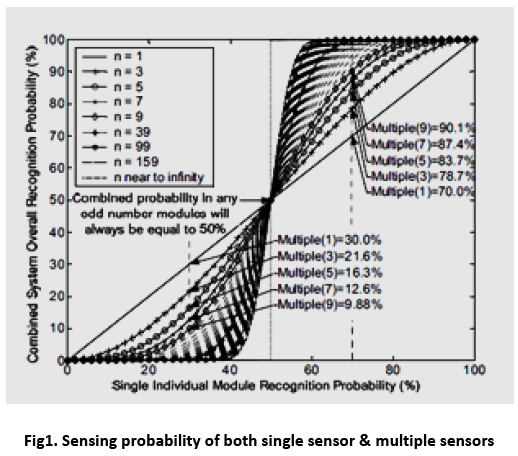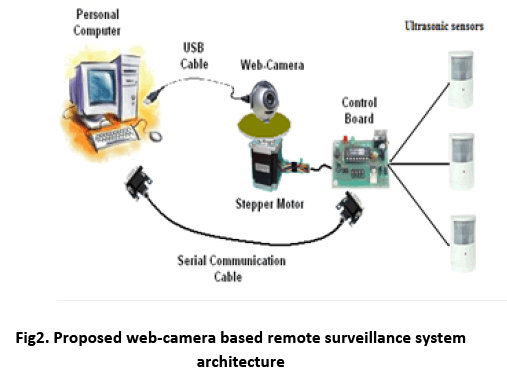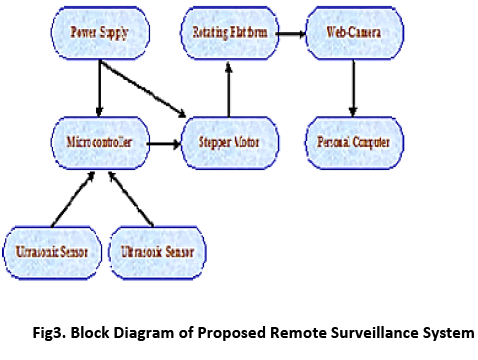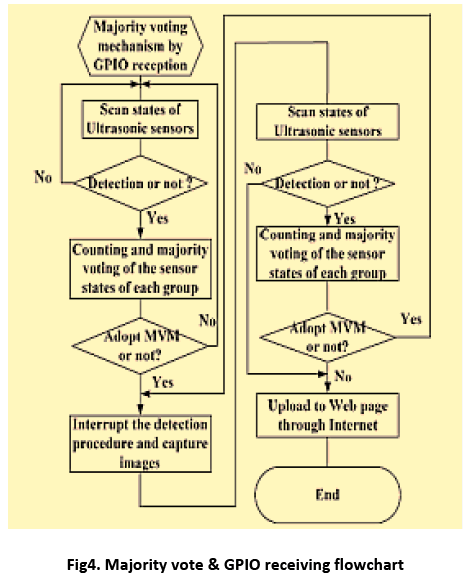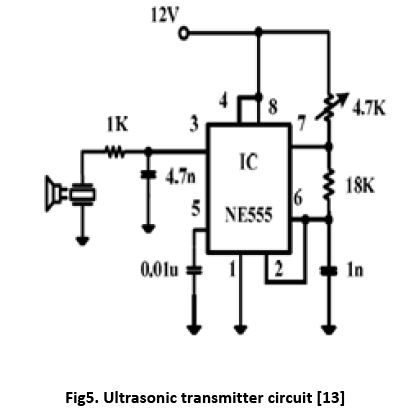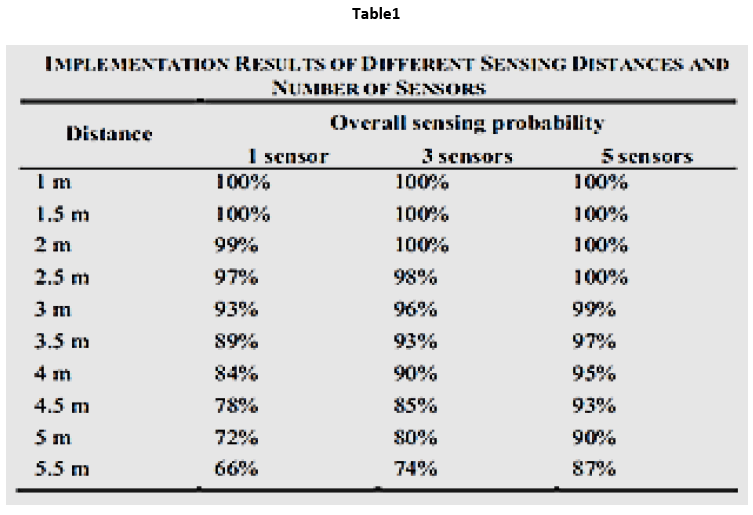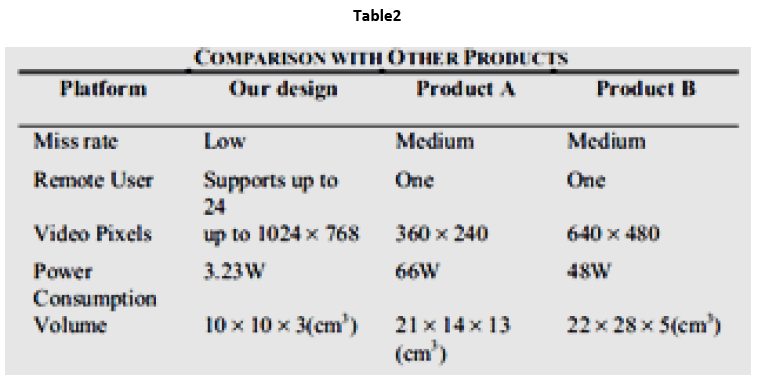Research Article Open Access
A Remote Industrial Surveillance System Using Multiple Ultrasonic Sensors
Mr.Ramchandra K. Gurav*, Prof. Mahesh S. KumbharDepartment of Electronics & Telecommunication, Rajarambapu Institute of Technology, Sakharale, M.S., INDIA
- *Corresponding Author:
- Mr.Ramchandra K. Gurav
Department of Electronics & Telecommunication
Rajarambapu Institute of Technology
Sakharale, M.S., INDIA
E-mail: ramgurav1987@gmail.com
Visit for more related articles at International Journal of Advance Innovations, Thoughts & Ideas
Abstract
In this paper we design and implement an Industrial surveillance system based on an embedded system with multiple ultrasonic sensor modules to enhance the system’s reliability. Each ultrasonic sensor module includes a transmitter and a receiver, and the modules are placed in a line direction. The aim of this paper is to develop and implement an affordable low cost web-camera based surveillance system for remote security monitoring. User can access to their monitoring system remotely via the internet with the use of Windows-based Remote Desktop program. This surveillance system consists of ultrasonic sensors and a web-camera that attached to a rotating platform, which can rotate to all four directions. When intruder detected by ultrasonic sensors, the web-camera will start recording the video stream and save it into memory storage, use of ultrasonic sensors will increase reliability of the overall system.
Keywords
Embedded surveillance system, Majority Voting Mechanism ultrasonic sensors, video stream, and Windows-based Remote Desktop program.
Introduction
Lately the use of a surveillance system for image detection is becoming more important. An embedded surveillance system is frequently used in the home, office or factory [1] for image processing of the surveillance system [2], and also for traffic monitoring [3-4], but this configuration requires a high performance core, which works against some advantages of embedded systems, such as low power consumption and low cost. Some designs propose the use of different sensors to track the sequence of the human body movement [5]. Other researchers construct an external signal to trigger the embedded surveillance system by means of a PIR sensor, which is triggered when an intruder enters the monitoring area [6]. However, a PIR sensor has a high miss rate when the intruder walks at a slow speed. Hence, to solve this problem, we use ultrasonic sensors to implement an embedded industrial surveillance system. In addition, because a single receiver can be influenced by refraction and reflection, we use several sensors to receive the ultrasonic transmissions in order to enhance the reliability of the system.
We extend some of the theory and application of the MVM, such as those relating to the enhancement of speech recognition probability by MVM [7]. The MVM determines the voting result of multiple sensors of an ultrasonic receiver, and the embedded industrial surveillance system starts the Web camera to start video streaming of the monitoring area. The objective of this paper is to design and implement a web-camera based remote surveillance system for remote monitoring. This surveillance system enables users to monitor their personal properties or household safety during the period when users are away from home or industry, either they are in the office or going for vacation. Users can access to their monitoring system remotely via the internet using Windows-based Remote Desktop program from a personal computer.
Majority Voting Mechanism
According to our MVM the resolution count must be greater than 0.5×n, with n being the total number of sensors. To fit the extreme value of n we use w×n to deduce the relationship between Pmultiple ( n ) = P, and Psingle = P in the extreme value of n [6].

We define:
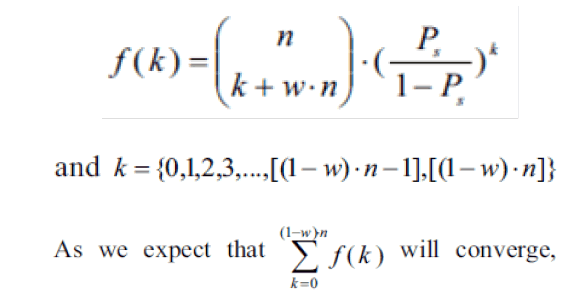
We need to determine whether f (k) is a decreasing function. From the ratio test for the convergence function we learn that increasing the n value decreases the ratio gradually for each f (k). The relationship is as follows.
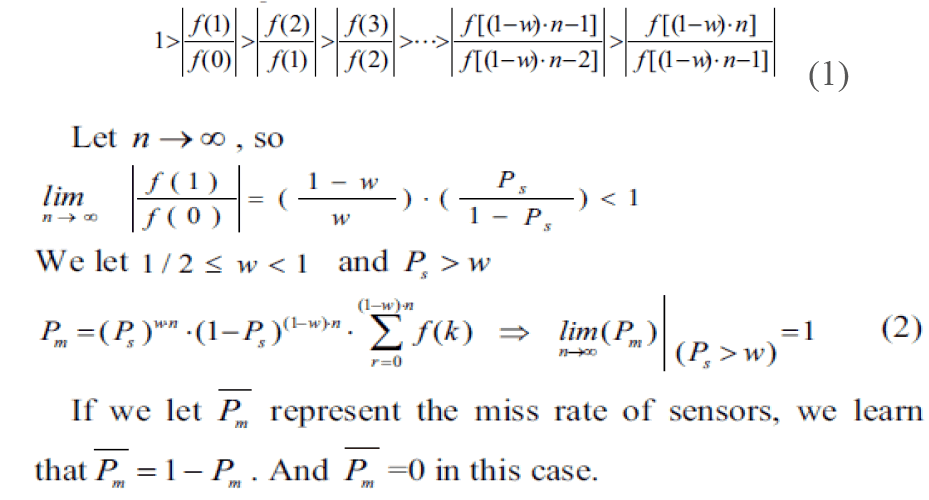

According to (2) and (3) the sensing probability of multiple sensors must be greater than the sensing probability of any single sensor. We know that when P single is greater than 0.5, the P (n) multiple will be greater than 0.5. Fig. 1 shows the improvement of the sensing probability of multiple sensors through majority voting. If the sensing probability of a single sensor is 0.7, the sensing probability of 7 sensors will be zero.
System Architecture
Software Module
In this surveillance system, a web-camera is attached to a rotating platform that can rotate to all four directions. When the ultrasonic sensor detects intruder, the web-camera activated and rotating platform rotates to the detected direction. Subsequently, web camera starts recording video of the monitored area and save it into memory storage for future retrieval and analysis.
There are two main software programs in this project. The first one is PC-based Graphic User Interface (GUI) application software for web-camera to capture video of the monitored area. The other one is the device-based program for micro-controller to handle the behavior of the sensors, stepper motor and web-camera. In order to improve effectiveness of the memory storage and cost saving purpose, the program for micro-controller is programmed in the way that it will send a signal to the PC when intruder detected by motion sensor. The web-camera will only start up and capture the video of the scene when GUI program receives an “activated” signal from micro-controller. The camera will be in idle mode for the rest of the time. By doing so, the cost of memory storage and power consumption can be reduced. The program of the MVM contains a detection of the GPIO function, a counting and majority vote function, an image capture function and a Web server, as shown in Fig. 4.
The embedded system always scans the GPIO sockets, all of which are connected to ultrasonic receivers. To verify the state of each ultrasonic receiver, the embedded system determines the voltage levels of the GPIO sockets. When the system reads 5V from a GPIO socket, we know the ultrasonic receivers, which have been blocked, will execute the majority voting program by counting the number of states of each ultrasonic receiver. The majority vote is achieved by the sensor groups of the different GPIO sockets, and the result determines whether to adopt the MVM or not. If the result is not to adopt the MVM, we know that the ultrasonic receivers have probably been blocked because of refraction and reflection.
The embedded system then returns to the initial state, scanning the GPIO sockets. If, as a result, the MVM is adopted, we know that the ultrasonic receivers have been blocked by an intruder. The embedded system interrupts the detection procedure and starts the Web camera which then begins to capture video. When this is finished, the embedded system starts the detection procedure over again. When the intruder has left the monitoring area, the counts of the the counts of the GPIO sockets do not adopt the MVM. The embedded system uploads the captured video by means of the Web server and the streaming server through the Internet.
Hardware Module
Fig. 5 shows the ultrasonic transmitter circuit. We use a typical oscillator chip, NE555, to design a square waveform generator, and adjust the resistances and capacitance to generate a 40 KHz frequency. The ultrasonic transducer will transform the voltage waveform into an ultrasonic transmission.
Implementation Results
In the experimental results, according to the specification of the components, we found that if the ultrasonic sensing distance is more than 6 meters, and if we give the transmitter the same direction as the sensing direction of the receiver, the ultrasonic transmission will be blocked when an intruder enters the transmission path of the sensing area. As decided by the MVM, our design detects the intruder and turns the Web camera on. The scattering angle of the ultrasonic sensors is very large with a fast scattering attenuation rate. Therefore, because of our observations at different distances and with perpendicular directions, the receiver is adjusted to within 100 cm of the scattering distribution. The transmitter is aligned with the direction of the receiver. Table 1 shows the primary results of our experiments. As we are increasing the sensing distance the sensing probability goes on decreasing. Table 2 shows a comparison of the measurement results of our design with products A and B, comprising reliability, Resolution, power consumption and response time.
Conclusion
Our experiment shows that the overall sensing probability improves with the use of multiple sensors having an MVM. The result is a higher cost because of the use of multiple sensors, amplifier circuits and the voting circuit. However, the improvement of the reliability significantly reduces the occurrences of false alarm from the industrial surveillance system.
References
- Jun Hou, Chengdong Wu, Zhongjia Yuan, Jiyuan Tan, Qiaoqiao Wang and Yun Zhou, “Research of Intelligent Home Security Surveillance System Based on ZigBee,” International Symposium on Intelligent Information Technology Application Workshops, pp. 554-557, 21-22 Dec. 2008.
- Jie Cao and Li Li, “Vehicle Objects Detection of Video Images Based on Gray-Scale Characteristics,”ETCS '09. First International Workshop on Education Technology and Computer Science, pp.936-940, 7-8 Mar. 2009.
- J. M. Munoz-Ferreras, F. Perez-Martinez, J. Calvo-Gallego, A. Asensio- Lopez, B. P. Dorta- Naranjo and A. Blanco-del-Campo, “Traffic Surveillance System Based on a High-Resolution Radar,” IEEE Transactions on Geoscience and Remote Sensing, pp. 1624-1633, June 2008.
- Saameh G. Ebrahimi, Nima Seifnaraghi, and Erhan A. Ince, “Traffic analysis of avenues and intersections based on surveillance from fixed video cameras,” 2009. 2009. IEEE 17th Signal Processing and Communications Applications Conference, pp. 848-851, 9-11 April 2009.
- Byunghun Song, Haksoo Choi, and Hyung Su Lee,“Surveillance Tracking System Using Passive InfraredMotionSensors in Wireless SensorNetwork,” International Conference on Information Networking, 2008. ICOIN 2008, pp. 1-5, 23-25 Jan. 2008.
- Ying-Wen Bai and Hen Teng, “Enhancement of the Sensing Distance of an Embedded Surveillance System with Video Streaming Recording Triggered by an Infrared Sensor Circuit,” SICE Annual Conference, 2008, .1657-1662,20-22 Aug.2008.
- Ying-Wen Bai, and Li-Sih Shen, “Enhancement of Sensing Probability and Sensing Range of an Embedded Surveillance System by Use of Multiple Sensor Groups Incorporating a Majority Voting Mechanism,” IEEE International Symposium on Consumer Electronics, pp.801-805, June 2009.
Relevant Topics
- Advance Techniques in cancer treatments
- Advanced Techniques in Rehabilitation
- Artificial Intelligence
- Blockchain Technology
- Diabetes care
- Digital Transformation
- Innovations & Tends in Pharma
- Innovations in Diagnosis & Treatment
- Innovations in Immunology
- Innovations in Neuroscience
- Innovations in ophthalmology
- Life Science and Brain research
- Machine Learning
- New inventions & Patents
- Quantum Computing
Recommended Journals
Article Tools
Article Usage
- Total views: 14162
- [From(publication date):
November-2012 - Apr 01, 2025] - Breakdown by view type
- HTML page views : 9580
- PDF downloads : 4582

